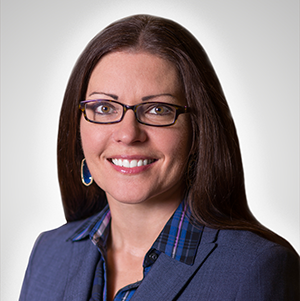“Usually, a patient with a herniated disc will report severe leg pain, sometimes with numbness, tingling or muscle weakness,” said Dr. Jessica Shellock, a spine surgeon on the medical staff at Texas Health Center for Diagnostics and Surgery.
The good news: although a herniated disc can be very painful, most people feel much better with just a few weeks or months of nonsurgical treatment.
Dr. Shellock offers some basics on herniated disc – what it is, what causes it, what your treatments options are, and what surgical treatment for a herniated disc typically involves.

What is a Herniated Disc?
To understand what causes a herniated disc, first understand the basic anatomy of your spine. The spine is made up of 24 bones, called vertebrae, that are stacked on top of one another. These bones connect to create a canal that protects the spinal cord. Nerve roots branch out from the spinal cord through openings in the vertebrae. Between these vertebrae are flexible intervertebral discs. They’re flat, round, and about ½ inch think.
“A herniated disc occurs when the inner substance of a disc pushes out and pinches on the spinal nerves,” said Dr. Shellock. “Discs serve as the cushions between the vertebral bones. When we have young, healthy, hydrated discs, they’re able to essentially serve as shock absorbers between the bones.”
As we age, however, those discs lose some of their water content and they become a little more fragile and less flexible.
“What can happen is that the inner substance of a disc can push out and go into the spinal canal, which is where the spinal nerves are,” said Dr. Shellock. “The bulging part of the disc puts pressure on the nearby nerve roots traveling in the spinal canal, which may cause the nerve to become inflamed. That leads to the pain, numbness, and weakness in one or both legs, a condition called sciatica.”
A herniated disc may also be triggered by a traumatic event, such as a fall.
Some risk factors may increase your risk of a herniated disc, including: gender (men are more likely to experience herniated discs than women); smoking; improper lifting or twisting; being overweight, which puts added stress on the discs in the lower back; repetitive activities, such as constant lifting, pulling, bending, or twisting; and a sedentary lifestyle or long, frequent periods of driving.
Diagnosing a Herniated Disc
If you’re experiencing lower back or leg pain, talk to your doctor. Typically, the physician will ask about your medical history, perform a physical exam and, if needed, prescribe a diagnostic test.
“In the physical exam, we look for loss of strength, or signs of tension that suggest a nerve root is being irritated,” said Dr. Shellock. “We will also obtain x-rays to see if there are any abnormalities with the disc spaces. If symptoms persist and are severe, we’ll typically order a magnetic resonance imaging (MRI) scan, which is the definitive diagnostic study to show the herniation.”
For most patients, a herniated disc will slowly improve over a period of several weeks to months. Most patients are free of symptoms by 3 to 4 months.
Spine surgery is typically recommended only after nonsurgical treatments are tried and have not provided relief. Surgery may also be recommended for patients with severe symptoms such as muscle weakness, difficulty walking or loss of bladder or bowel control.
“About 80-85% of patients with herniated disc and sciatica pain will improve without surgery,” said Dr. Shellock. “So the statistics are in your favor; you very likely won’t ultimately need to have the surgery.”
Nonsurgical Treatment Options for a Herniated Disc
In most cases, your doctor will recommend nonsurgical treatment that focuses on pain relief. This might involve activity modifications, such as: taking rest breaks throughout the day (but avoiding sitting for long periods); changing your daily activities to avoid movements that can cause further pain; and taking nonsteroidal anti-inflammatory medications (NSAIDs), such as ibuprofen or naproxen.
Physical therapy may also help. This involves specific exercises to help strengthen your lower back and abdominal muscles. In some cases, if pain persists, an injection of a cortisone-like drug into the space around the nerve may provide short-term pain relief by reducing inflammation.
Surgical Treatment for a Herniated Disc
Conservative, nonsurgical treatments are almost always tried before surgery is recommended. Most patients won’t require surgery. But when surgery is in order, the most common procedure used to treat a single herniated disc is a microdiscectomy or laminectomy/discectomy. The procedure is done through a small incision at the level of the disc herniation and often involves the use of a microscope and for some patients, can be performed endoscopically.
“In this procedure, the surgeon removes a small amount of bone and ligament tissue in the back part of the spinal canal to allow access to where the nerves are passing,” said Dr. Shellock. “The nerves can then be moved off to the side, allowing the surgeon to access the disc space and remove the herniated material, freeing up space for the spinal nerves.”
Shellock adds that the surgery typically takes 60 to 90 minutes. Often, it’s performed on an outpatient basis (which means the patient doesn’t need to stay in the hospital overnight.)
After surgery, patients are advised to modify their activities for about 6 to 8 weeks, then to gradually resume normal activities.
“During the recovery period, patients are advised to limit repetitive twisting, bending or lifting -- anything that loads the disc mechanically,” said Dr. Shellock.
If the patient is a candidate for endoscopic spine surgery the surgeon will use a camera inserted through the skin via an incision that’s less than one centimeter. Instead of opening up the spine, the spine surgeon uses a series of micro-instruments. After the procedure, patients get one stitch under the skin and get to go home the same day. ESS’s advantages include a small incision, less pain, less downtime and no overnight hospital stay.
The doctor or a physical therapist may also recommend a simple walking program (such as 30 minutes each day), along with specific exercises to help restore strength and flexibility to the back and legs.
Overall, the results of microdiscectomy surgery are generally very good. Most patients are able to resume their normal activities after a period of recovery following surgery.
If you or someone you know is suffering from a herniated disc, take the next step and make an appointment with an experienced spine specialist. Our patient navigator is standing by to help you find the doctor that is right for you! Call or email today.
